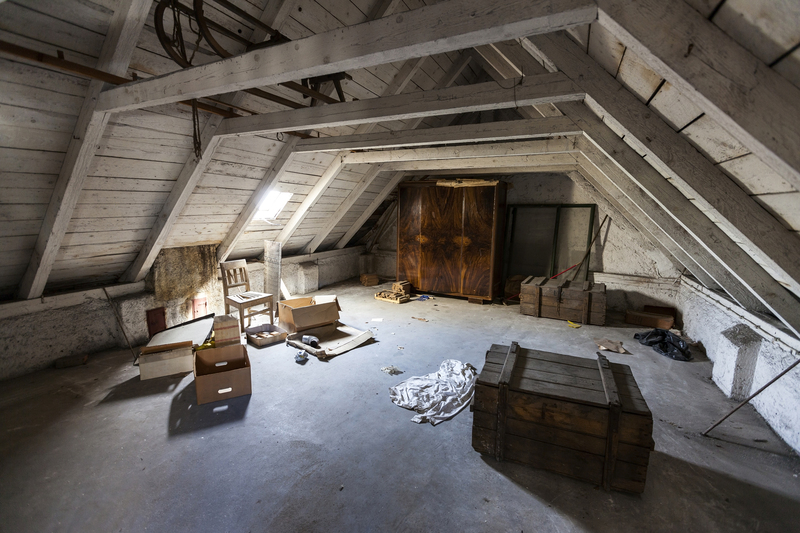Quick and Easy Methods to Remove Damp Smells
Posted on 08/09/2025
Quick and Easy Methods to Remove Damp Smells: A Comprehensive Guide
Damp smells, often described as musty, stale, or moldy, are more than just an annoyance. These odors can make your living environment uncomfortable and may point to underlying moisture issues that need attention. Luckily, there are quick and easy methods to remove damp smells from your home, car, or any enclosed space. This article provides actionable tips, preventive strategies, and in-depth insights into banishing these unpleasant odors for good.

Understanding Damp Smells: Causes and Risks
Damp odors typically arise when moisture accumulates in enclosed areas, creating the perfect breeding ground for mold, mildew, and bacteria. Common causes include:
- Water leaks from pipes, roofs, or windows
- Poor ventilation in basements, bathrooms, or closets
- Wet fabrics left for too long (clothes, towels, carpets)
- Outdoor moisture seeping into walls or floors
Exposure to these odors can lead to discomfort and even health issues, such as allergies or respiratory problems. Addressing them promptly is essential for a safer and healthier home.
Quick & Easy Tips to Eliminate Damp Odors Instantly
While comprehensive moisture treatment may take time, certain quick solutions can neutralize damp smells fast. Here's how to get started:
1. Increase Fresh Air Circulation
- Open windows and doors to facilitate cross-ventilation, especially after rain or when using water-intensive appliances.
- Use exhaust fans in kitchens, bathrooms, and basements to expel humid air.
- Position portable fans to guide odors out and draw in frisse air.
2. Absorb Moisture with Household Ingredients
- Baking soda: Place bowls of baking soda in musty-smelling rooms or closets; it absorbs excess moisture and neutralizes odors effectively. Sprinkle on carpets or upholstery, leave overnight, and vacuum thoroughly.
- Activated charcoal: Set out small bags of activated charcoal which naturally traps odors from the air.
- Cat litter: Use unscented, clay-based cat litter in shallow trays to soak up moisture in problem areas like basements or inside cabinets.
3. Attack the Source: Cleaning and Disinfecting
Sometimes removing musty smells requires deep cleaning, especially if mold is present.
- Wash fabrics: Launder all soft furnishings, clothing, and linens using vinegar or baking soda to break down mildew odors.
- Wipe hard surfaces: Use a mixture of water and vinegar (50:50) to clean walls, tiles, or shelves. This eliminates microbes and kills odor-causing bacteria.
- Treat carpets: Rent or use a carpet cleaner; air-drying outside is highly effective when possible.
4. Use Commercial Odor Neutralizers
- Odor eliminating sprays: Products containing enzymes break down organic odor molecules, tackling the core of the damp smell.
- Dehumidifiers: These devices continuously extract moisture from the air to prevent odors from returning. Small, rechargeable dehumidifier packs are available for closets and cars.
- Scented gel beads or plug-in air purifiers can add a pleasant aroma while you address the underlying issue.
Long-Term Strategies to Prevent and Control Damp Smells
For lasting results, combine fast techniques with preventive steps. A multi-pronged approach will ensure your space remains odor-free and healthy.
5. Address Moisture Intrusion at the Source
- Repair leaks: Inspect pipes, taps, and appliances for drips or pooling water. Repair faulty roofing, windows, and wall cracks promptly.
- Improve drainage: Make sure gutters and downspouts channel water away from the property's foundation. Consider landscaping solutions for problematic yard drainage.
- Seal basement walls with waterproof paint or coatings to stop seepage.
6. Improve Overall Ventilation
- Install extractor fans in moisture-prone areas (kitchen, bathroom, laundry).
- Keep furniture away from external walls to allow airflow.
- Whenever possible, keep interior doors open to promote circulation.
7. Regular Maintenance and Routine Cleaning
- Launder fabrics promptly and avoid leaving damp clothes in the washing machine or hamper.
- Vacuum regularly to remove dust and spores from carpets and floors.
- Set reminders to check for signs of damp or mold in hidden areas: behind furniture, under sinks, or inside closets.
Room-by-Room Guide to Eliminating Damp Odors
Different rooms may require specialized approaches. Here's a breakdown for specific spaces:
Basement
- Install a dehumidifier: Basements are especially prone to high humidity; running a dehumidifier can make a significant difference.
- Remove clutter: Cardboard boxes, old books, and fabrics tend to trap moisture and harbor smells.
- Re-seal concrete floors and walls if you notice seepage or condensation.
Bathroom
- Wipe down tiles and shower curtains regularly with anti-mold solutions.
- Leave the door or window open after showers to allow steam to escape.
- Replace caulking or grout if mold is persistent.
Bedroom & Closet
- Dry clothes thoroughly before putting them away--weird odors often come from insufficiently dried fabrics.
- Use moisture absorbers or hang small dehumidifier packs inside wardrobes and drawers.
- Rotate clothing and bedding seasonally to prevent mustiness.
Kitchen
- Clean under sinks and behind appliances, which are prone to leaks and hidden mold.
- Regularly empty compost bins and trash to prevent odor buildup.
- Ventilate when cooking to expel steam and grease-laden air.
Car
- Remove wet mats and ensure upholstery is completely dry--use portable fans if needed.
- Sprinkle baking soda onto carpets and seats, let sit, then vacuum.
- Keep windows open briefly daily, weather permitting.
Natural Remedies for Damp Odors
Prefer green cleaning? Great news: many natural items can help you quickly neutralize damp odors:
- Lemon: Place lemon slices in bowls around the room or use lemon juice mixed with water to wipe surfaces.
- White vinegar: Absorbs odors and disinfects simultaneously--spray diluted vinegar solution in the affected area.
- Essential oils: Lavender, tea tree, or eucalyptus oils (few drops added to water) can be diffused or added to your cleaning routine.
- Coffee grounds: Place dry coffee grounds in open containers; they act as effective odor traps, especially in refrigerators and cabinets.
Signs of a Larger Problem: When to Call a Professional
While most quick solutions for damp smells fix the majority of cases, persistent or severe odors may indicate significant moisture damage. Call in a professional if:
- Visible mold: Patches of black, green, or white growth on walls or furniture.
- Structural deterioration: Peeling paint, crumbling plaster, or warped wood.
- Recurrent health symptoms: Chronic allergies, coughing, or skin irritation linked to your indoor environment.
- Unexplained, stubborn damp smells after repeated cleaning or airing out.
Specialists can assess moisture penetration, perform mold remediation, and ensure your home or workspace is safe.

Frequently Asked Questions About Removing Damp Smells
- How long does it take to get rid of damp smells? Minor odors can clear within a few hours with ventilation and cleaning; embedded odors may take several days with deep cleaning and drying.
- Are damp smells always caused by mold? Not always. Other causes include bacteria, stagnant water, and chemical reactions in building materials. However, musty odors are a common indicator of possible mold growth.
- Can air fresheners fully remove damp odors? No, air fresheners only mask the smell temporarily. Addressing the source of moisture is essential for lasting removal.
- Which is the best dehumidifier for a small room? Choose a compact, energy-efficient model rated for your room's square footage. Brands like Pro Breeze, Eva-Dry, and hOmeLabs offer reliable options.
- Does using scented candles help? Scented candles can add a pleasant aroma but do not remove the molecules that cause damp odors.
Conclusion: Enjoy a Fresh, Odor-Free Home
Tackling damp smells quickly is possible with the right approach. By combining household remedies, deep cleaning, moisture control, and smart prevention, you can ensure your home is inviting and healthy. Remember, identifying and eliminating the source of moisture is crucial--don't just mask odors, solve them!
For persistent issues, seek professional advice to protect the structural integrity and air quality of your space. With consistent effort and a proactive attitude, you'll never have to worry about musty, damp odors again.
Key Takeaways:
- Ventilate and dry affected areas as soon as you notice a musty smell.
- Use natural absorbers such as baking soda, charcoal, and vinegar for fast odor removal.
- Deep clean fabrics and hard surfaces to kill mold, mildew, and bacteria.
- Address the source of moisture--prevent damp problems from recurring.
- If damp smells persist, consult a professional for comprehensive assessment and treatment.
Start using these quick and easy methods to remove damp smells today, and enjoy a fresher, healthier environment for you and your loved ones!





